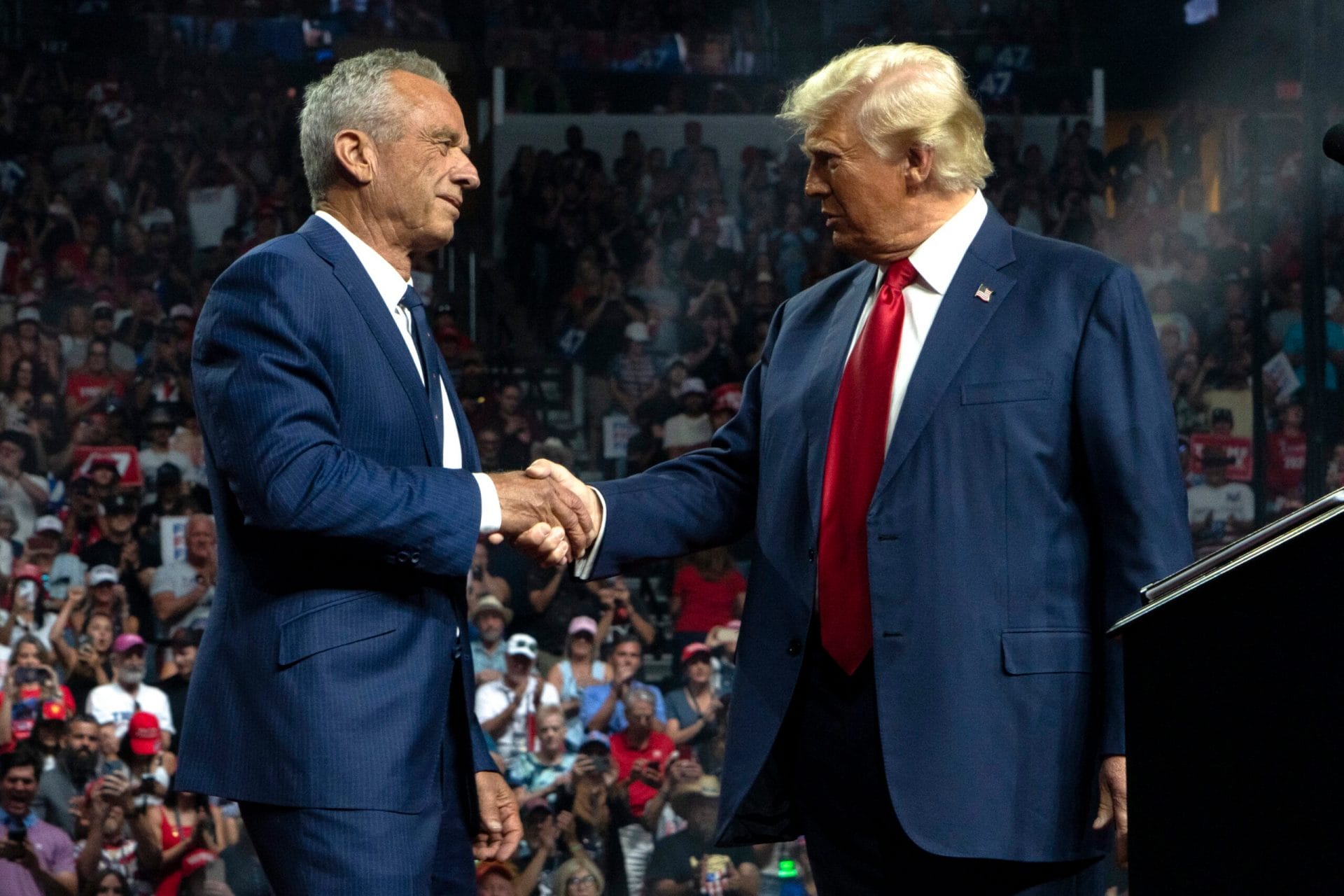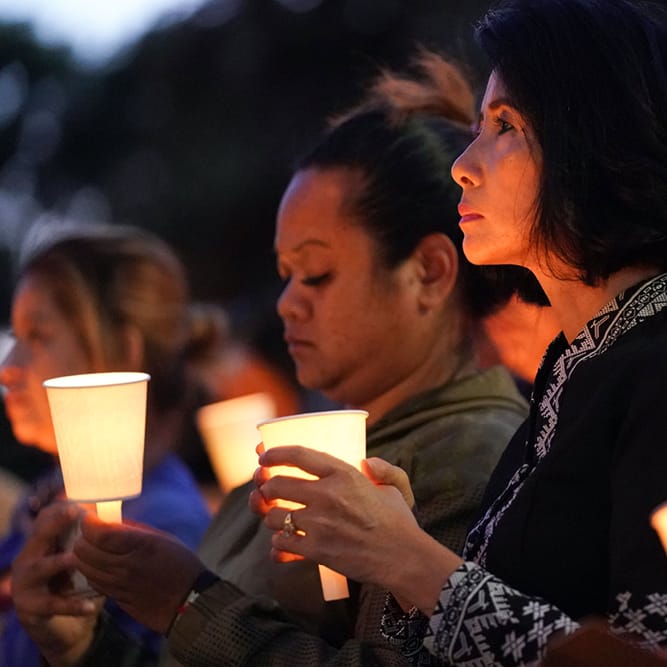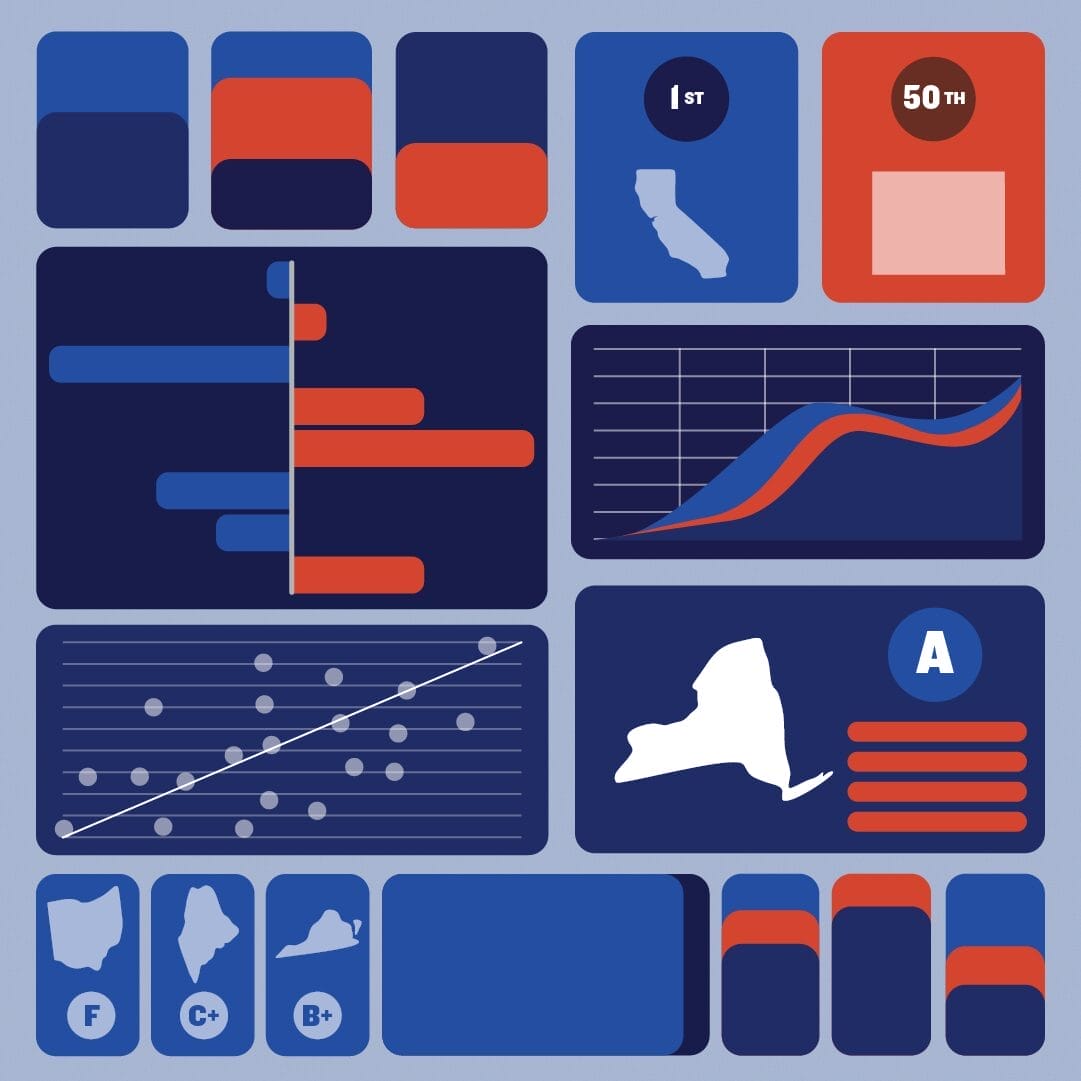
Trump Fired CDC Workers. This Is Bad News for the Fight to End Gun Violence.
Public health workers across America were laid off by the thousands. This severely impacts our ability to understand gun violence and its solutions.
- The Department of Health and Human Services (HHS) has announced it is laying off 10,000 people. Impacted agencies within HHS include the CDC, FDA, National Institutes of Health (NIH), Centers for Medicare and Medicaid Services (CMS), and more.
- The CDC will decrease its workforce by approximately 2,400 employees, with a focus on “returning to its core mission of preparing for and responding to epidemics and outbreaks.”
- They have fired almost the entire staff of the National Center for Injury Prevention and Control, which studies gun violence and suicide prevention and manages crucial databases used by public health officials, researchers, practitioners, lawmakers, and more.
- We don’t yet know the full extent of the impact these layoffs will have on gun violence–related research. But we do know it will take years, if not decades, to reverse the damage done.
MEDIA REQUESTS
Our experts can speak to the full spectrum of gun violence prevention issues. Have a question? Email us at media@giffords.org.
Contact
At the end of March, the new secretary of Health and Human Services, Robert F. Kennedy Jr., announced plans to cut 10,000 workers from the department. This would impact organizations like the CDC, the FDA, the National Institutes of Health (NIH), and more. It’s bad.
On April 1, these layoffs began. Leadership, longtime staffers, scientists, administrators, and communications staff were all impacted. Lifesaving projects and research were halted.
These cuts are devastating and far-reaching. And they greatly affect our ability to address this country’s gun violence epidemic.
The gun violence prevention movement relies on accurate, timely data and research to study gun violence and develop solutions that will work. That’s why it’s so important to treat this issue like the public health crisis it is—even if this administration believes otherwise.
But because of these cuts, we no longer have access to key data sources and institutional knowledge. We’ve lost research grants, violence prevention programs, injury dashboards and the staff who know how to use them, and so much more.
Trump, RFK Jr, and this administration must be held accountable for the damage caused by these cuts. This country’s recent and historic crime reductions will not last if we undermine the programs keeping our communities safe.
Gun violence in America kills more children and teens than car crashes, cancer, the flu, or any other cause of death. Access to data and epidemiological research is essential to ensuring we continue to create solutions that will help keep children and our communities safe. But now, the Trump administration has put important gun violence prevention tools and knowledge at risk.
The National Center for Injury Prevention & Control
As part of Trump’s plan to cut 10,000 jobs at the Department of Health and Human Services, the administration is firing thousands of CDC employees, including staff from the National Center for Injury Prevention and Control—the team that studies gun violence and suicide prevention.
The National Center for Injury Prevention and Control manages data collection systems that help us understand gun violence. It compiles records from hospitals, law enforcement, and public health sources, which help it operate two crucial data tools that are now at risk:
- WISQARS: This database (which us nerds pronounce as “whiskers”) provides data on fatal and some nonfatal injuries, giving the gun violence prevention movement a full picture of the gun violence crisis. WISQARS staff provide tools to help make this data more accessible to researchers, policymakers, and other stakeholders.
- Injury, Overdose & Violence Dashboard: These dashboards provide close to real-time data on gun violence at the national, state, and local levels, allowing stakeholders to track trends and respond more quickly to emergency crises. They are some of the most granular geographic data on gun deaths that are widely available to the public, making them a critical resource for local responses to violence.
The experts who run these systems have developed years of institutional knowledge about how this data should be properly cleaned, collected, and presented to the public. Yet the staff responsible for maintaining these systems has been gutted. Cutting these positions and failing to collect this data will only create a vacuum in these systems that cannot be repaired quickly.
Federal Grant Programs
The staffing cuts by the Trump administration will also likely restrict the distribution of key federal grant programs that fund lifesaving research, constrain institutional knowledge about gun violence prevention, and severely limit key violence prevention programs.
Since 2020, the National Center for Injury Prevention and Control has helped distribute $12.5 million annually from Congress for gun violence research. After decades of almost no federal investments, these funds have been critical to expanding what we know about gun violence and how to address it. Without staff to distribute this funding, universities, public health institutions, and independent researchers will not have the resources to study the causes and consequences of gun violence, as well as the strategies to prevent it.
Institutional Knowledge
Experts at the center regularly published research describing the gun violence crisis, often using data that is much more current than what is available to academic researchers. By doing so, they provided timely information on emerging trends in gun violence, often focused on important gun violence–related topics like risk factors for gun suicide, firearm intimate partner violence, and hospitalization rattes for gun injuries.
Without these experts, access to this data, and the ability to disseminate information to public health professionals across the country, knowledge on gun violence in America will be extremely hampered.
We don’t know the full extent of these layoffs, or just how wide-reaching the impact will be. But we do know that it will be much, much harder to make policies and operate programs that protect kids and communities. We know that we won’t have the tools we need to understand and fight gun violence.
Public health practitioners in local communities working on voluntary safe storage programs and school-based suicide prevention programs will lack critical data to plan their programs and measure their progress. We will lose critical information about how our kids and communities are impacted by guns, how suicide risk factors are changing, and how prevalent youth gun-related behaviors are. This will make it harder to save lives from gun violence.
We can’t end the gun violence crisis with our eyes closed. We need these experts and programs to build the safer future we all deserve. Here at GIFFORDS, we’re doing our best to keep lifesaving information available to the public and researchers—because it is essential to solving this crisis and saving lives.

SPOTLIGHT
GUN VIOLENCE STATISTICS
Explore facts, figures, and original analysis compiled by our experts. To end our gun violence crisis, we need to better understand where, how, and why violence occurs.
Learn More

